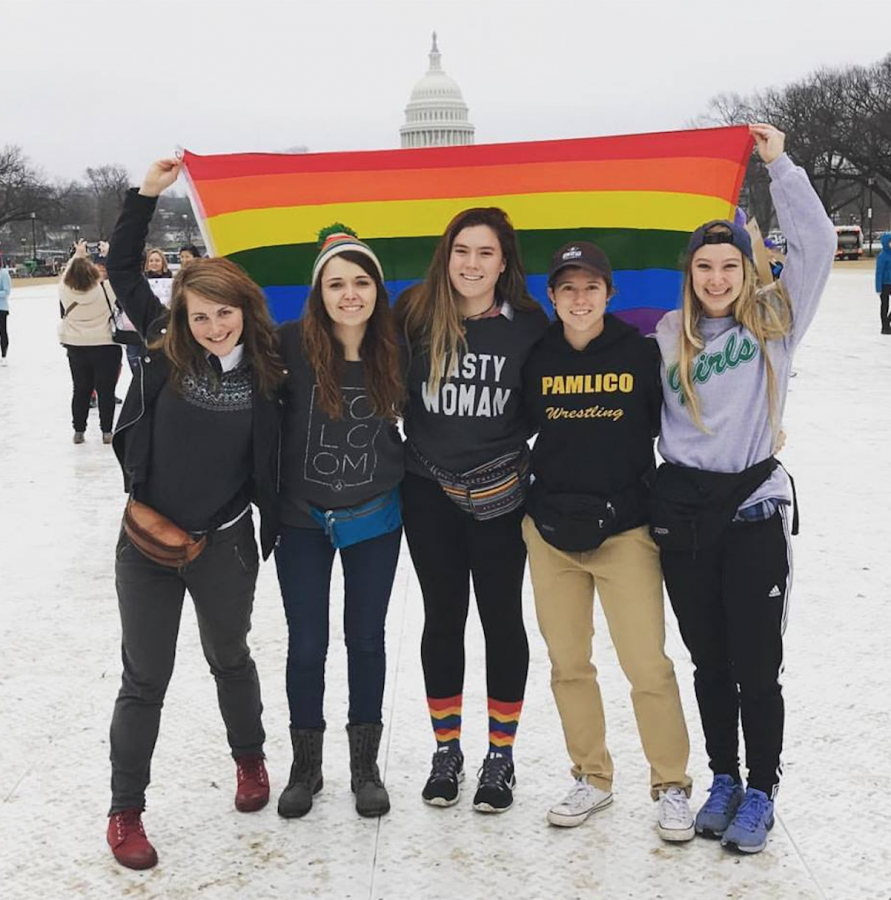Women’s March: Being a part of history
1.2 million people. The largest political gathering of a peaceful protest in U.S. history. On January 21st, a group of five women from the University of North Carolina Wilmington Rugby team took a road trip up to Washington D.C. to march for the rights they believe they more than deserve in this country.
“Hey, Ho, Donald Trump has got to go!” Not only was the protest about women’s rights, but it was a protest against Donald Trump and his attempts to take away the rights of the African American community, the LGBT community, the immigrant community, and more. There were people of every gender, every race and every sexuality peacefully gathered for their own purpose.
Among the common people were various well-known names and celebrities such as Emma Watson, Scarlett Johansson and America Ferrera.
Famous feminist Gloria Steinem said about Trump’s tweets, “a twitter finger is not a trigger finger.”
These artists came together to express their concern with Donald Trump’s approach to presidency, along with the rest of the women and men in attendance. The crowd was so thick that trying to get one block over to the bathrooms took forty-five minutes, and once you got there, the line took an additional hour.
The time went by fast because all of the women waiting in line participated in common conversation, supportive chat, and fun cheers and chants. One girl decided to take a new look at the crowd from a different perspective. She climbed to the top of a tree and started taking pictures for people of the masses.
Eventually, when it was time to walk, marchers were given an announcement that the march was going to be cancelled because too many people showed up. Determined to do what they came there to do, marchers took to the streets on their own, and before they knew it, 1.2 million people were walking through the streets of Washington for their rights and privileges in the United States of America.
Those five friends, dressed in their fanny packs, wrapped in a rainbow flag, chanted along with their sisters, and realized then that they were currently a part of history. A part of a resistance against a failed democracy.
It isn’t without risk that we continue to fight, but on that day in January, nobody was hurt, nobody was arrested, there was love in the air, and support for one another.
“We are all nasty women, and we came here to fight for love and hope and peace and kindness,” said Holly Wilson, marcher and student at UNCW.
It’s time to make a stand. If you are willing and able, go to Washington for the many more marches coming up in the months ahead. On April 29th, there will be a march for climate and on June 11th there will be a pride march.
Join your sisters in the fight and march.


